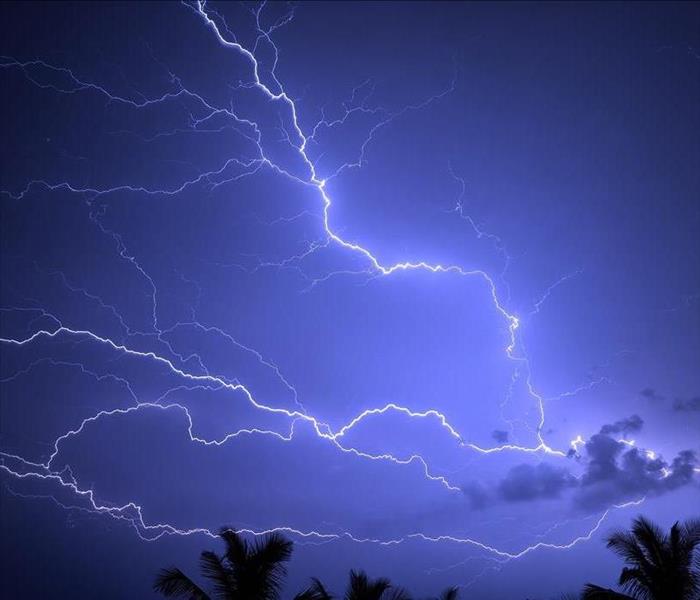What You Should Know About Lightning
9/23/2022 (Permalink)
 Learning more about these 3 common types of lightning you may see during a thunderstorm can help you best protect yourself and your property.
Learning more about these 3 common types of lightning you may see during a thunderstorm can help you best protect yourself and your property.
Most storms involve lightning, which can pose safety concerns as well as dangers to residential and commercial properties. Even hurricanes sometimes have lightning near the eye of the storm. There are 3 common types of lightning you may see during a thunderstorm and learning more about them can help you best protect yourself and your property. With information from NOAA’s “Lightning Types” article, today’s blog will discuss 3 common types of lightning that you may see in thunderstorms, as well as safety risks to properties associated with each type.
Cloud-to-Ground Lightning
The most dangerous type of lightning is cloud-to-ground lighting. This kind of lightning occurs when a channel of negative charge shoots down from a storm cloud and meets a positive charge emanating from tall objects like nearby trees, power lines, and tall structures like homes and commercial buildings. If the positive charge comes from a tall property, the unification of the positive and negative charges initiates the flow of an electrical current, which can pose safety risks to the property. Fires can ignite as a result of an electrical surge from a lightning strike. Equipping your property with surge protectors can help prevent damage to your property if lightning strikes. Additionally, if you know that there are thunderstorms in your area, even if you don’t see any lightning nearby, refraining from using electrical appliances and doing activities involving water, like taking a shower or bath, are good rules of thumb in order to protect the people living or working in your residential or commercial property during a thunderstorm.
Cloud Flashes
Sometimes, lightning during a thunderstorm does not reach the ground. Instead of seeing lightning bolts, you might just see flashes of light in the clouds. This phenomenon is known as cloud flashes, in which lightning remains in the clouds through what NOAA calls intra-cloud lightning flashes, and it occurs when an “electrical discharge between oppositely charged areas within the thunderstorm cloud,” according to The National Weather Service. While cloud flashes may not seem as dangerous, cloud flashes still pose safety threats, as they indicate that the storm is producing electrical charges.
Heat Lightning
You may be surprised to learn that there is actually no such thing as heat lightning. What we perceive as heat lightning is actually the lightning flashes from a distant storm that is far enough away from us that we can’t see the storm’s lightning bolts or hear its thunder. We mention heat lightning in this blog because an accurate understanding of what we know as heat lightning reveals that a potentially dangerous storm producing lightning is in the area.
Experience Lightning Damage? Call SERVPRO
Know that SERVPRO Team Wall has your back in the event that lightning from a storm causes damage to your property. We are committed to making it “Like it never even happened” after any storm. Trust SERVPRO’s experienced storm damage restoration specialists, equipment, and methods to restore your property to its preloss condition. Speak to one of our SERVPRO Team Wall team members by calling SERVPRO of Metro Pittsburgh East at (412) 672-5400. On our website, you can find more information about our Storm Damage Restoration capabilities, including storm restoration services tailored specifically to commercial properties, our Disaster Recovery Team for large losses, and our water restoration process.





 24/7 Emergency Service
24/7 Emergency Service